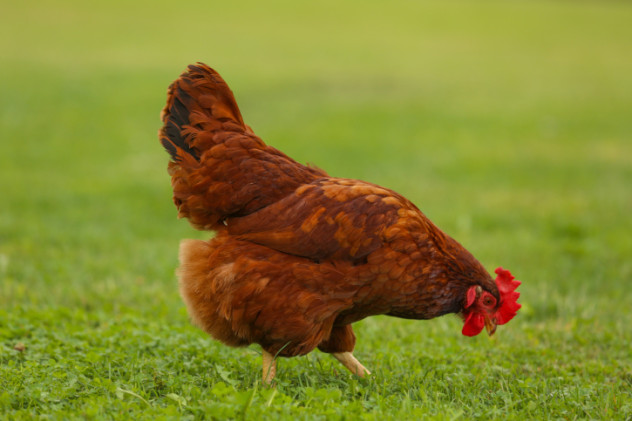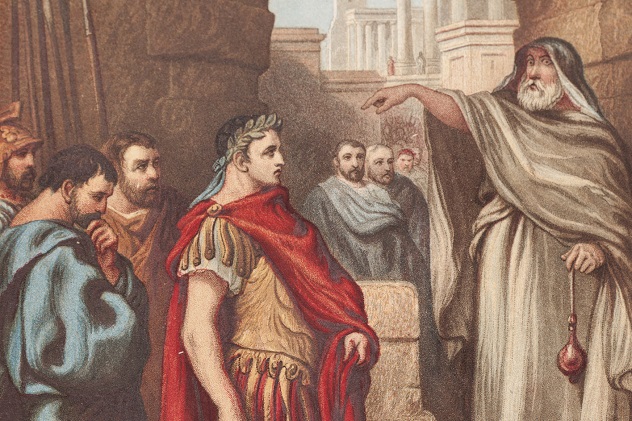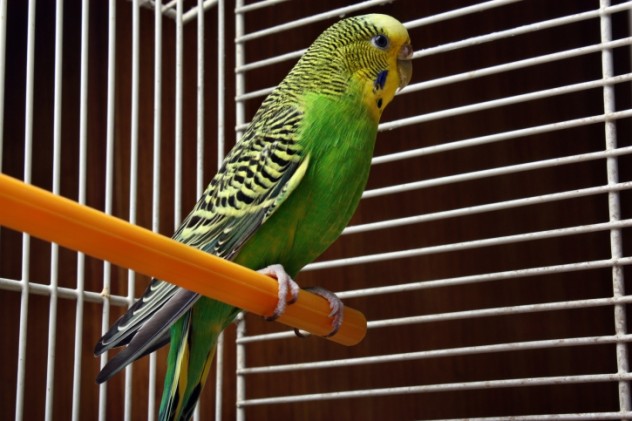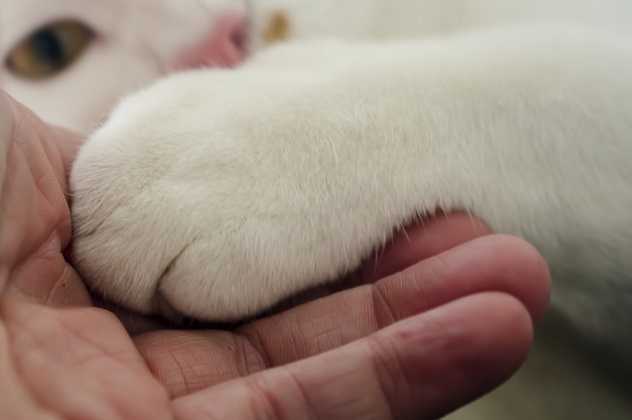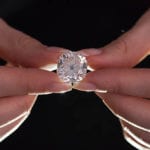10Alectryomancy
Alectryomancy was the practice of divining the future through the fortune-telling power of chickens. First, a chicken was placed amid piles of grain. Each pile represented a letter, and the answer the diviner sought was spelled out by the chicken pecking at the piles. The chicken, preferably a pure white cockerel, would first have its claws cut off. The severed claws were then wrapped in lambskin and fed to the chicken, which was presumably hungry enough to swallow them. After that, the diviner chanted a magical prayer while holding the chicken and placed it down in front of the piles of grains. This had to be done when either the Moon or Sun was in the constellation Ares, or it wouldn’t work. Alectryomancy was thought to have predicted the successor to Roman Emperor Valens, though the details are sketchy and often contradictory. Some say Valens himself ordered the divination so he could find and eliminate any potential opponents who would try to seize the throne from him. But Valens was a staunch Christian, so the more likely scenario, if it happened at all, is that his political rivals used the practice to determine whom they should aid in their struggle against him and his platform of Christianity. Whatever the case, the chicken spelled out the letters th, e, o, and d in Greek. Valens proclaimed the divination illegal but put the man predicted by the chicken to death. For good measure, he also executed a number of other men whose names began with the same letters. Valens himself was later killed in battle, and eerily, his successor proved to be a man named Theodosius. Unfortunately for those who wanted Valens ousted, Theodosius was also a celebrated Christian.
9Haruspicy
Haruspicy meant predicting and even influencing the future through the detailed study of animal entrails, usually the liver. Although it was most famously used by the Romans, it was actually an Etruscan practice. Believing that their god Tages gave it to his followers, the Etruscans continued to use haruspicy even after their civilization was assimilated into the Roman Empire. The Romans viewed haruspicy and its practitioners as quite powerful—even the renowned Roman philosopher and politician Cicero wrote about them. The most famous haruspex (which is what the method’s diviners were called) was named Spurinna. He was well respected in his time, called upon by no less than Julius Caesar to make predictions. His most famed prediction was later immortalized by Shakespeare in his play about the doomed emperor. The diviner warned Caesar to “beware the Ides of March,” which corresponded to March 15, the day Caesar was assassinated. Reality, however, somewhat stole Spurinna’s thunder. The soothsayer’s actual prediction—that danger threatened Caesar no later than the Ides of March—was somewhat less precise than the line immortalized by the famed playwright. While that may seem eerie enough, it’s been suggested that Spurinna may have already been aware of the assassination plot.
8Parrot Astrology
Originally from southern India, parrot astrology gained the most popularity in Singapore. Despite its name, the birds used to divine the future are actually parakeets, usually green. Though every fortune-teller has his own unique style, a session often begins with the customer saying their name while the fortune-teller sets out a number of cards based on Indian cosmology. They will then open the bird’s cage, and the parakeet walks out and selects a card to determine the customer’s fortune. Once a card is chosen, the bird returns to its cage. Amazingly, one psychic parakeet named Mani successfully predicted the correct winners for all of the 2010 FIFA World Cup quarterfinal ties as well as the Spain-Germany semifinal. Sadly, though, the bird’s hot streak ran out when he failed to predict the final. Despite Mani’s fame, parrot astrology is a dying art. Singaporeans are losing faith in parakeets’ ability to predict the future, and most of the mystics’ income now comes from tourists. Their numbers are dwindling.
7Scatomancy
Scatomancy, or fortune-telling through feces, has been around for centuries and taken various forms. Perhaps the earliest was developed in ancient Egypt, where the movement of scarabs (a species of dung beetle) as they balled up a piece of dung were assessed. Modern accounts detail ducks walking around in an enclosed area, eating feed, and defecating for the scatomancer to read. Still others read the meaning of a person’s own feces. Such fortunes are divined through analyzing the shape, texture, and even smell of their dung. A professional scatomancer named S.S. Sighn surprised director and skeptic Blake Freeman with his hands-on analysis. Sighn brought out the feces of a companion of Freeman’s in a large bowl to feel, smell, and divine. According to Sighn’s reading, the meaning of individual nuggets can apparently include lending support to someone. Larger logs likewise express strength and leadership. The diviner says that he’s been given a gift, but no one wants to know how he came to realize he had it.
6Asparamancy
A self-fashioned “asparamancer” residing in England, mystic Jemima Packington, claims to be able to predict the future using spears of asparagus. She says she has been reading asparagus since she was eight years old, having inherited the “gift” from her grandmother, who practiced reading tea leaves. Her method of divination amounts to tossing the vegetables in the air and “reading” how they land. To her credit, she predicted a strong performance for England in the 2012 Olympics, an event later heralded as England’s greatest performance in any Olympics ever. She also predicted a poor performance for England in the Euro 2012, where the team was later eliminated in the quarter finals. How surprising that was, however, is a matter of discussion for soccer fans. Her more dubiously claimed predictions, as reported by the tabloid Mirror, include the two English royal births in 2012. She claims that this prediction came from her asparagus falling in the shape of a crown with two smaller spears pointing toward it, which she said represented two pregnancies. Even she admits reading asparagus sounds silly but upholds her readings as accurate. Her ability to predict awards, however, is in question. While her prediction of an Oscar win for The King’s Speech came to pass, her prediction for an animal winner, sadly, did not. Her prediction of the collapse of the Euro as a form of currency was likewise a bust.
5Rumpology
Rumpology is the practice of divining a person’s future from the shape of their derriere. Jackie Stallone, America’s foremost rumpologist, claims it’s an ancient practice once used in several past civilizations, though she provides no evidence for this claim. According to Stallone, the ancients could read rumps by having them painted with henna before sitting on a papyrus, so she performs reading on prints and even digital photos sent to her. Among the revealing details of a person’s butt are the shape and roundness, which reveals aspects of their personality. Rumpology is used to divine more than simple personality traits, though. Stallone claims she has accurately predicted the results of elections with rump readings of her dobermans. (How the rumps of her dobermans found out is anyone’s guess.) Rumpology has spread to several countries, including Germany, where one blind rumpologist feels clients’ butts for readings. He claims that, since his blindness ensures his clients’ anonymity, his disability is a blessing.
4Nipple Fortune-Telling
Fortune-telling through the mystical power of the human areola came, perhaps not surprisingly, from Japan. It became popular there after a “magician” named Eri Koizumi appeared on Japanese TV wearing a nipple-shaped beret to publicize her book Become Happy: Areola Fortune-Telling. Fortunes are told mostly by the shape of the areola. Cute names like “crabapple” and “blue mountain coffee bean” describe its shape, which reveals personality traits. Crabapple areolas, for example, mean you are smart and value happiness. Color is another determining factor in a reading. Shades range from “Oreo” to “biscuit” and reveal traits like “loyalty to duty” and being “chatty.” However, these colors—and to a lesser extent, shapes—are based on the Japanese population’s nipple colors, so those with lighter or darker hues may not be able to benefit from having their nipples read. If this sounds too crazy to be true, especially after one look at Koizumi’s nipple hat, it’s because it likely isn’t. Koizumi is known as a “magician” but registered with her talent agency as a comedian. The whole thing is probably a big joke, even though it’s doubtless some people take her seriously.
3Pawmistry
“Pawmistry” is like palmistry, except for your cat. Just like nipple-reading, you can apparently learn it from a book. Pawmistry: How to Read Your Cats Paws claims to teach you how to read your cat’s fortune via the lines and shape of its feet. Performing a reading, the authors claim, will make you a better caregiver with a deeper understanding of your pet. They also claim a pawmistry reading will reveal more than just your cat’s inner self but its cultural influences, geographic origin, and hereditary particularities as well. One of the authors, Ken Ring, claims to have “discovered” pawmistry after performing a standard palmistry reading on a cat at a psychic party. The former clown and magician now claims to be a fortune-teller, psychic, and alternative weather predictor. He is an avid climate change denier as well, believing that even if climate change is real, humans should prefer a warmer, more comfortable planet. The other author is Paul Romhany, who makes no claims to any mystical powers and mostly writes about performance magic. He has, however, co-authored another book with Ring that claims to teach how to divine someone’s personality from the way they laugh and speak.
2Table-Tipping
As early as the Roman Empire, people were using tables to tell fortunes. These tables had letters engraved into the surface, and when asked a question, a ring hanging over the table would supposedly travel along the top spelling out answers. At least two ancient fortune-tellers were sentenced to torture for trying to divine the name of the next emperor in such a fashion. Table-tipping, as we know it today, began in the US and later spread to Europe. It was favored at events like parties because it didn’t require a paid fortune-teller. Participants in the seance would sit around a table with their fingers lightly touching the edge, and one of the members would make “contact” with any spirit willing to converse. The idea was to ask questions, usually of the “yes” or “no” variety, and invite the spirit to answer by knocking, flipping, or moving the table. The most interesting incident of table-tipping was the “Philips Experiment.” In the experiment, parapsychology researcher Dr. Alan Robert George Owen created a fictional “spirit” that he and his team would “contact.” Holding table-tipping seances every week to speak with their imaginary spirit, “Philip,” the group claimed to experience a variety of phenomena such as knocks, scratches, breezes, the table moving, and the room’s lights dimming. All members were aware Philip was fictional, and the answers to all the questions the imaginary spirit answered were known to at least some of the participants. The purpose of the experiment was to prove that phenomena like what they claim to have recorded were created by the participants’ minds. Dr. Owen specialized in psychic research and poltergeists and thought a variety of supernatural occurrences were products of humans’ own psychic power.
1Automatic Writing
Automatic writing is writing without conscious effort. The messages scrawled were believed to come from outside entities, at least at first. It came into vogue as a way to communicate with supernatural beings, especially the dead, after its use by the Fox sisters, famed diviners who have been linked to the creation of spiritualism. The sisters died in poverty after one confessed to fraud, but their legacy and techniques lived on. Helen Smith, a 19th-century medium, claimed to have received messages from Mars via the technique. These extra-planetary messages were relayed to her clients in the Martian language, which skeptics have noted bore a strong resemblance to her native French. Non-spiritualists, including psychologists, tended to view automatic writing as either a parlor trick or an expression of the unconscious mind. One early psychologist who studyied automatic writing used the Fox sisters’ method to amuse himself as much as conduct serious research. During one attempt, he pricked his hand before receiving angry messages about the pain. Nathan keeps a Japan blog where he writes about the sights, expat life, and finding Japanese culture in everyday items. You can also find him on Facebook and Twitter.
